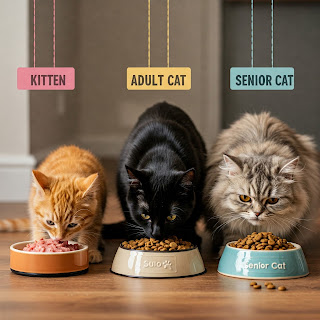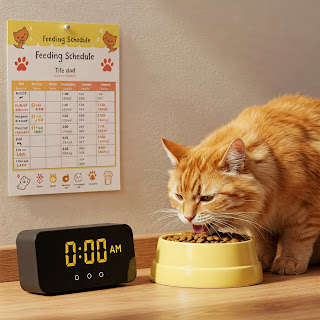How Much Food Does Your Cat Need? A Guide to Keeping Them Happy and Healthy
Cats are masters of mystery, but their nutritional needs don’t have to be. Knowing how much food your feline friend needs is key to ensuring they stay healthy and content. Whether your cat is a picky eater or always on the prowl for more, let’s break down the essentials of feeding your cat the right amount, so you can keep those purrs coming!
Factors That Affect Your Cat’s Food Needs
Every cat is unique, and their dietary requirements vary depending on several key factors:
Age and Life Stage: Kittens need more calories to fuel their rapid growth and endless playtime. Adult cats require a steady intake to maintain their weight, while seniors may need fewer calories to prevent weight gain.
Activity Level: Is your cat a zoomie-loving sprinter or a couch potato snoozer? Active cats burn more calories and need extra fuel, while less active kitties require smaller portions.
Weight and Size: A larger breed, like a Maine Coon, naturally needs more food than a petite Singapura. Similarly, overweight cats may require reduced portions to help them slim down.
Health Conditions: Cats with conditions like diabetes, hyperthyroidism, or kidney disease may have special dietary needs. Always consult your vet for guidance in these cases.
Wet vs. Dry Food: What’s Best?
Choosing between wet and dry food can feel like a big decision, but here’s what you need to know:
Wet Food: Packed with moisture, it helps keep your cat hydrated and is often lower in calories per serving. Ideal for cats who don’t drink much water.
Dry Food: Convenient and cost-effective, dry kibble is calorie-dense and can support dental health. Just be sure to monitor portions to avoid overfeeding.
Pro Tip: A combination of wet and dry food can provide balanced nutrition and variety for your cat.
How to Calculate Your Cat’s Portion Sizes
Here’s a general guideline to help you determine how much food your cat needs daily:
Kittens: Feed small meals 3–4 times a day, totaling 200–300 calories.
Adult Cats: Most adult cats need about 20–30 calories per pound of body weight. For example, a 10-pound cat would require 200–300 calories per day.
Senior Cats: Depending on their activity level and health, seniors may need slightly fewer calories to maintain a healthy weight.
Check the feeding instructions on your cat food packaging and adjust them based on your cat’s needs.
Signs You Might Be Overfeeding or Underfeeding
Your cat’s body language and weight can reveal whether you’re hitting the mark with their meals:
Overfeeding: Weight gain, lethargy, or visible fat around their belly could mean you’re dishing out too much.
Underfeeding: If your cat is constantly begging, losing weight, or showing reduced energy, it might be time to up their portions.
What About Treats? and Feeding Schedule
Treats are a great way to reward and bond with your cat, but moderation is key. Treats should make up no more than 10% of your cat’s daily calorie intake. Look for healthy, low-calorie options to keep their diet balanced.
Consult Your Vet for Tailored Advice
While these guidelines are a great starting point, every cat is unique. Regular check-ups with your vet can help fine-tune your cat’s diet, ensuring they’re getting exactly what they need to thrive.
Final Thoughts
Feeding your cat isn’t just about filling their bowl; it’s about giving them the nutrition they need to lead a happy, healthy life. By considering their age, activity level, and overall health, you can create a feeding plan that’s as unique as your feline friend.
Want more tips on keeping your cat healthy and happy? Visit CatnadoCat.com for expert advice, fun insights, and everything you need to be the best cat parent ever!


.png)







